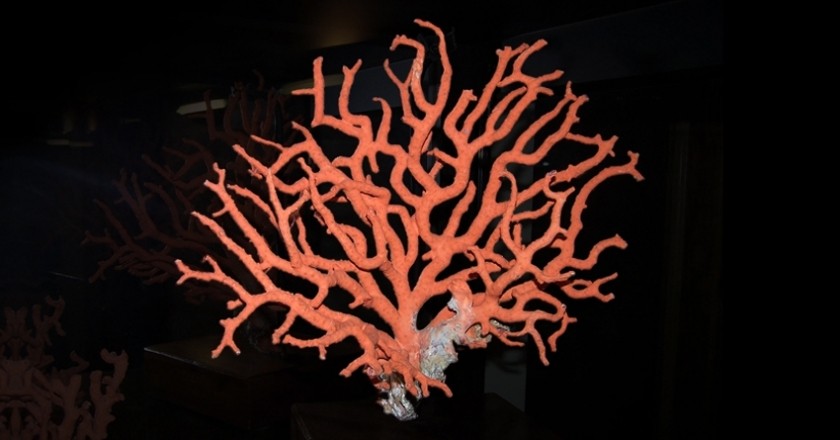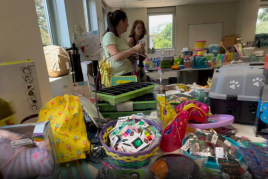The red coral: a thousand-year-old history of Catalonia

More than 2,500 years ago, red coral was fished in Catalonia, from the first settlers: Phoenicians, Greeks, Romans and until today; the coral has been one of the most important businesses of the current Costa Brava, which includes the regions of: Alt Empordà, Baix Empordà and La Selva.
We propose a route that integrates some of the most emblematic municipalities of the Costa Brava center: Begur with coves famous for their beauty and one of the most beautiful nudist beaches: Sa Illa Roja.
L 'Estartit where we will discover the most important diving center in the whole Mediterranean and finally we will close the route in l'Escala, a town that in the words of Josep Pla is located upside down, as is also the case of Port de la Selva, which are the only two towns open to the north and the unleashed fury of the Tramuntana.
We start!
Begur
Time, the Indians, the cork industrialists and the coraleros, have written the most important pages of the history of this area, which is reflected in the houses and corners of the town.
 Begur is the most famous village in the history of coral for its fishermen, people who were looking for adventure out of the most known waters and came to fish coral in the peninsular Mediterranean, in Sardinia, Sicily, Barbaria (Tunisia and Algeria) and the islands of Cape Verde.
Begur is the most famous village in the history of coral for its fishermen, people who were looking for adventure out of the most known waters and came to fish coral in the peninsular Mediterranean, in Sardinia, Sicily, Barbaria (Tunisia and Algeria) and the islands of Cape Verde.
In the town we find two streets named Vera and San Antonio, where we find houses made with the profits of the fishing seasons in Vera (Province of Almeria) and San Antonio (Province of Alicante). There were so many men who embarked on boats for coral fishing that during the ten months that the campaign lasted in the village there were only children and older men. And the women walked freely through the streets of the city with the petticoats without fear of being disturbed.
 When the intrepid fishermen returned to make the sale of coral on the beach itself, they were eagerly awaited by Neapolitan buyers. The town was celebrating a great party in which large and small participated and where whole oxen were cooked and the drink flowed.
When the intrepid fishermen returned to make the sale of coral on the beach itself, they were eagerly awaited by Neapolitan buyers. The town was celebrating a great party in which large and small participated and where whole oxen were cooked and the drink flowed.
We recommend that you visit the church of Sant Pere, inside you will find the Virgin of the Coral that carries in its arms a child who has an authentic branch of coral in his hand.
In "La fada de Roses" Jacint Verdaguer already spoke of the Beragu coraleros that worked in the Berrea de Palafrugell, nowadays known as the irrigation of Begur or Tamariu. It is a large underwater crevice that is located in the front of Palafrugell more than 1,000 meters deep and that will end in 150 meters, under the Cabo de San Sebastián, with a branch that passes in front of Tamariu to go to die at 80 meters under the Cape of Begur.
"Los coralers de Begur
coralen dins llur barqueta.
– Coralers, si m'hi voleu
fareu bona pesca.
Si voleu saber qui só,
só una fada empordanesa,
les fades del Pirineu
me diuen Sirena–.
Quan ells se tiren al fons
jo en sortia amb les mans plenes,
ells trauen rams de coral,
jo aquest ram de perles".
La fada de Roses". Jacint Verdaguer. "Canigó" (1886).
Begur has eight beautiful coves of the most beautiful of the Empordà coast, from north to south: Playa del Racó, Sa illa Roja, Sa Riera, Aiguafreda and Sa Tuna, and past the Cabo de Begur, Fonda Beach, Fornells and Aiguablava. All cozy, icy and transparent water.
By its own configuration there is no way round to make them all in a row; we found three: from the Playa del Racó to Sa Riera, from Aiguafreda in Sa Tuna and from Aiguablava to Playa Fonda. The rest must be done inside.
L'Estartit
L 'Estartit started as a small population of coral fishermen. Thanks to its exceptionally rich funds, in the fifties of the seventeenth century it had already grown to some twenty houses. All its industry was linked to the sea and the coral. The fishermen had personal areas that could not be exchanged between them. So rich were the Medes that every two times the coraleros fought among themselves to try to appropriate the most productive corners.
 It is considered that it was born as a town in the eighteenth century, when there was practically no piracy in the area. Today, it is a decentralized municipality of Torroella de Montgrí, bounded on the north by the Montgrí Massif and crowned by the Montgrí Castle.
It is considered that it was born as a town in the eighteenth century, when there was practically no piracy in the area. Today, it is a decentralized municipality of Torroella de Montgrí, bounded on the north by the Montgrí Massif and crowned by the Montgrí Castle.
L'Estartit, sheltered by the Medes Islands, is still the richest coral area in the northern Mediterranean area, and its main attraction is diving. Every day they leave their port, the boats of the diving clubs, full to overflowing with divers, who want to enjoy the wonderful bottom of the Medes Islands and see the red coral in its natural habitat. The Medes Islands are part of the Montgrí Natural Park and have been declared a marine reserve with a total ban on coral fishing and major restrictions on fishing in general.
Visitors can also enjoy a promenade in La Foradada, La Pedrosa or La Farriola, three beautiful coves.
 But not only in the sea coral, you can see exceptionally in the store located in the center of the city, named Mar del Coral owned by Eduard Vila, son of Pere Vila, a major coral fisherman of the years fifty and sixty, who acted as an intermediary with Neapolitan buyers in principle and, later, with Indians and Chinese.
But not only in the sea coral, you can see exceptionally in the store located in the center of the city, named Mar del Coral owned by Eduard Vila, son of Pere Vila, a major coral fisherman of the years fifty and sixty, who acted as an intermediary with Neapolitan buyers in principle and, later, with Indians and Chinese.
L'Escala
This population, known for its anchovies, is totally oriented to the north, and is strongly punished by the Tramuntana, the predominant north wind in the region.
 Leaving by sea to the south we find the entire coast of the Montgrí Massif, a mountainous area next to the sea of calcareous origin, today a natural park but that in the epoch of its splendor with the coral, was exploited in all its length. By its formation, with the ravages of the sea, crumbles with some ease and over the years have formed, caves, caves and tunnels on the seabed, making it a very rich coral.
Leaving by sea to the south we find the entire coast of the Montgrí Massif, a mountainous area next to the sea of calcareous origin, today a natural park but that in the epoch of its splendor with the coral, was exploited in all its length. By its formation, with the ravages of the sea, crumbles with some ease and over the years have formed, caves, caves and tunnels on the seabed, making it a very rich coral.
Also influences the mouths of the rivers Ter to the south, and the Fluvià and the Muga to the north, that through the marine currents make a great contributions of nutrients that favor a faster growth.
Cala Montgó was one of the important places of concentration of the coraleros in the area, right on the border of L'Estartit (Baix Empordà) and L'Escala (Alt Empordà).
Towards the north and about 8 nautical miles is the Punta Falconera and from this point we have the entire coastline passing through Cadaqués , Port de la Selva and Llançà, until we reach the North Catalonia, where the coral has been bred in an amount and also exceptional quality, of which we will talk later.
What to do
Creuers Mare Nostrum
L'Escala (a 1.2 Km)We are a family business that has been dedicated since the late…
Sailing Boats and Events (Goleta Äran)
Palamós (a 14.2 Km)Experience the experience of sailing on a historic vessel. Daily departures from…
Where to sleep
Camping Bungalow Resort & Spa La Ballena Alegre
Sant Pere Pescador (a 3.5 Km)At Camping Ballena Alegre we have a spa where you can enjoy…
Casa Rural Mas Masaller
Cruïlles, Monells i Sant Sadurní de l'Heura (a 14.1 Km)Isolated farmhouse almost 3 kilometres from La Bisbal de Empordà. The farmhouse…
Càmping Nautic Almata
Castelló d'Empúries (a 9.3 Km)Náutico Almata is a family campsite located in a unique setting on…
Fonda l'Estrella
Palafrugell (a 5.9 Km)La Fonda la Estrella is a? "bed & breakfast" quiet and cozy,…















